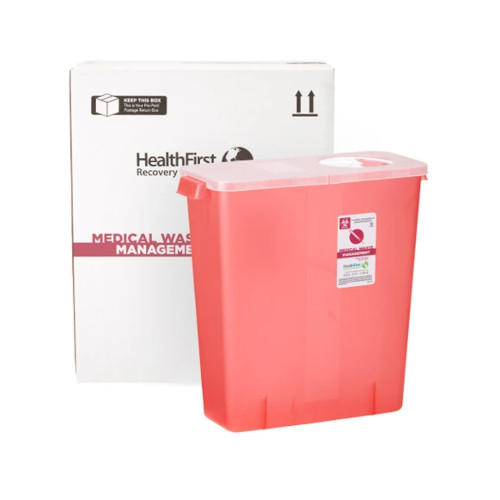Exploring Different Garbage Disposal Options for a Cleanser Atmosphere
In the search of a cleaner setting, the monitoring of waste disposal has actually emerged as a vital focal factor for lasting growth. With a plethora of waste disposal alternatives readily available, varying from typical land fill techniques to cutting-edge waste-to-energy modern technologies, the choice of just how we handle our waste has far-reaching implications for our planet's health.
Recycling Methods
Applying effective reusing approaches is critical in decreasing waste and advertising sustainability in our atmosphere. Recycling involves the procedure of transforming waste materials into multiple-use items to prevent unnecessary disposal.
An additional important recycling approach is composting, which involves disintegrating natural waste like food scraps and lawn trimmings into nutrient-rich dirt. By incorporating these various recycling methods into our waste management methods, we can dramatically decrease our environmental impact and move towards an extra lasting future.

Composting Methods
Efficient waste administration methods, such as recycling methods, lead the way for a cleaner atmosphere, and currently, moving the focus to 'Composting Techniques', we discover sustainable means to decay organic waste for environmental advantage. medical waste removal.
Composting is an all-natural process that changes organic waste, like food scraps and yard trimmings, right into a nutrient-rich soil amendment. The trick to effective composting lies in creating the right balance of green products, such as vegetables and fruit scraps, and brownish products, like dried leaves and twigs. These products decompose with the aid of bacteria, damaging down the waste into beneficial garden compost.
There are various composting strategies readily available to suit various needs. Conventional yard composting includes layering natural products in a container or heap and on a regular basis turning the combination to freshen it. Vermicomposting, on the other hand, uses worms to break down organic matter right into garden compost (click here). For those with restricted space, indoor composting systems offer a hassle-free service. By making use of composting methods, we can lower the quantity of waste sent out to garbage dumps while producing a beneficial item for improving dirt and supporting plant development.
Incineration Pros and Disadvantages
Incineration, as a waste disposal method, provides both advantages and drawbacks that warrant careful factor to consider in the realm of lasting waste monitoring methods. On the positive side, incineration can considerably reduce the volume of waste, minimizing the requirement for land fill room and potentially lowering greenhouse gas exhausts.
Nonetheless, there are significant downsides to incineration. One significant problem is the prospective launch of damaging contaminants into the air, such as dioxins, hefty steels, and particulate issue, which can have adverse impacts on human health and wellness and the environment. Additionally, the high preliminary financial investment and functional expenses of incineration facilities posture financial obstacles, making it a less cost-efficient alternative compared to other waste management methods. Careful tracking and regulation are important to reduce these unfavorable influences and make the most of the benefits of incineration as component of a comprehensive waste administration approach.
Land Fill Monitoring Techniques
Landfills play a crucial duty in waste management and ecological preservation by offering a containment system for the disposal of strong waste products. Effective landfill monitoring approaches are necessary to alleviate environmental effects and make sure the long-lasting sustainability of these garbage disposal websites. One essential technique appertains waste compaction to make best use of the use of available space within the garbage dump (click here). By condensing the waste, the quantity is minimized, enabling more waste to be suited in time.
Moreover, the implementation of daily cover practices is essential in reducing odors, preventing trash, and minimizing the tourist attraction of bugs. Treatment the disposed waste at the end of every day aids to have smells and protect against possible ecological contamination. Additionally, the tracking of landfill gas discharges and leachate degrees is critical in guaranteeing that environmental criteria are met which any kind of potential dangers to bordering ecological communities are decreased.

Waste-to-Energy Technologies
Among the cutting-edge approaches to squander administration involves using Waste-to-Energy innovations to transform strong waste right into useful power resources. Waste-to-Energy (WtE) modern technologies incorporate a series of processes that intend to remove energy from waste materials through thermal, chemical, or biological ways. This conversion procedure not only decreases the quantity of waste that winds up in garbage dumps but also creates useful energy sources such as electrical energy, warmth, or biofuels.
There are a number of techniques of Waste-to-Energy conversion, including incineration, pyrolysis, and gasification. Incineration involves burning waste at high temperatures to produce warm and electricity. Gasification transforms waste into a syngas, which can be used for power generation or chemical manufacturing. Pyrolysis breaks down organic materials using high temperatures in the lack of oxygen, creating gas, bio-oil, and char.
Implementing Waste-to-Energy modern technologies can aid reduce ecological concerns related to traditional garbage disposal methods while simultaneously providing a renewable resource source. Nevertheless, careful factor to consider needs to be provided to emissions control and guaranteeing the sustainability of feedstock supplies for these technologies to be genuinely useful for a cleaner environment.

Final Thought
To conclude, checking out different garbage disposal alternatives such as recycling, composting, incineration, garbage dump management, and waste-to-energy technologies is vital for promoting a cleaner atmosphere - click here. Each technique has its own benefits and difficulties, however by making use of a mix of these strategies, we can work towards reducing the quantity of waste that ends up in garbage dumps and ultimately add to a more lasting future for generations to find
With a wide range of waste disposal choices offered, ranging from typical garbage dump techniques to innovative waste-to-energy innovations, the selection of how we handle our waste has far-reaching effects additional info for our planet's health. medical waste removal service.Incineration, as a waste disposal approach, provides both advantages and disadvantages that merit careful factor to consider in the realm of lasting waste administration techniques.Land fills play a vital role in waste administration and ecological preservation by offering a containment system for the disposal of solid waste materials. By compacting the waste, the volume is lowered, permitting for even more waste to be fit over time
One of the ingenious techniques to lose administration involves utilizing Waste-to-Energy innovations to convert strong waste into functional power resources.